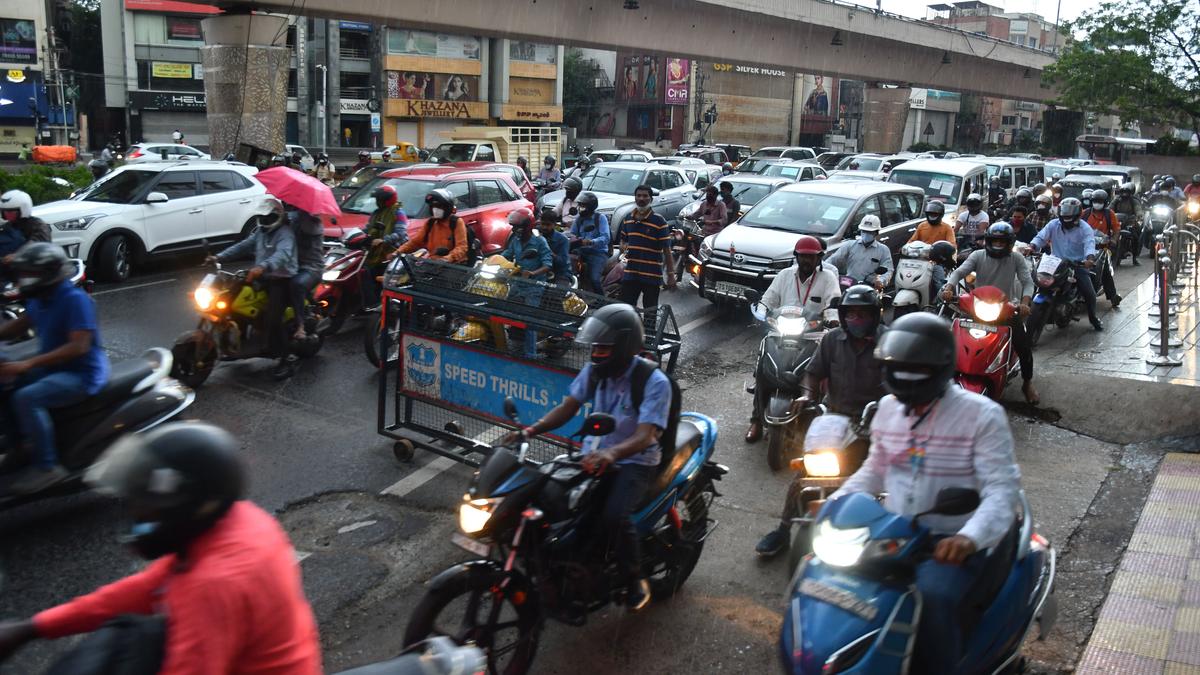Sodadasi Rahul, an M. Tech student at Mahindra University, studied four riders navigating an 8.8 km stretch in Hyderabad. The image is used for representative purposes only.
| Photo Credit: NAGARA GOPAL
In Hyderabad, where traffic congestion is a daily challenge, an intriguing study sheds light on a little-known aspect of riding — driver distractions. Sodadasi Rahul, an M. Tech student at Mahindra University, studied four riders navigating an 8.8 km stretch between Bahadurpally X Roads and Dulapally X Roads. And his findings revealed that drivers blink 30% more frequently during peak hour traffic compared to off-peak conditions.
Along with his research partners, C. Samuel Peter and associate professor Saladi S.V. Subbarao, Rahul discovered that cognitive and manual distractions account for about 2.41% of total travel time during both peak and off-peak hours.
Rahul presented his study at the International Conference on Sustainable Smart Cities in Chandigarh recently. Titled ‘Understanding Driver Distractions in Two-Wheelers Using Eye Tracker’, the study deployed sophisticated eye-tracking glasses to record real-time monitoring of pupil and gaze movements, areas of interest, time of focus, generation of heat maps and other parameters. The readings were recorded on a mobile app and then analysed.
According to the researchers, a high blink rate indicates driver stress, anxiety and distraction — factors that pose danger.
The student researchers used a linear regression model to analyse the relationship between travel speed and average blink rate and found a positive correlation between the two parameters, meaning that they led to distraction. The average speed of the riders was about 26 kmph and their blink rate was 43.59 per minute in peak hour traffic. The figures during off-peak hour traffic are 31.3 kmph and 31.15 per minute, respectively.
Rahul explains that most of the distraction-related studies, such as Shanghai Naturalistic Driving Study, China, were conducted on heavy vehicles such as trucks and buses or personal cars, while research on two-wheeler drivers’ distraction has been limited. He also points out that more than 50% of the fatal accidents in the country, as reported by the Ministry of Road Transport and Highways in 2023, involve two-wheelers, and thus, the need to study it.
The study is not without limitations, Rahul agrees. It provides an insight, but it involved a small sample size, lacks a diversity in driver demographics, such as sex of the driver and age, varying light conditions and different road surface conditions.
Published – February 11, 2025 12:18 pm IST
